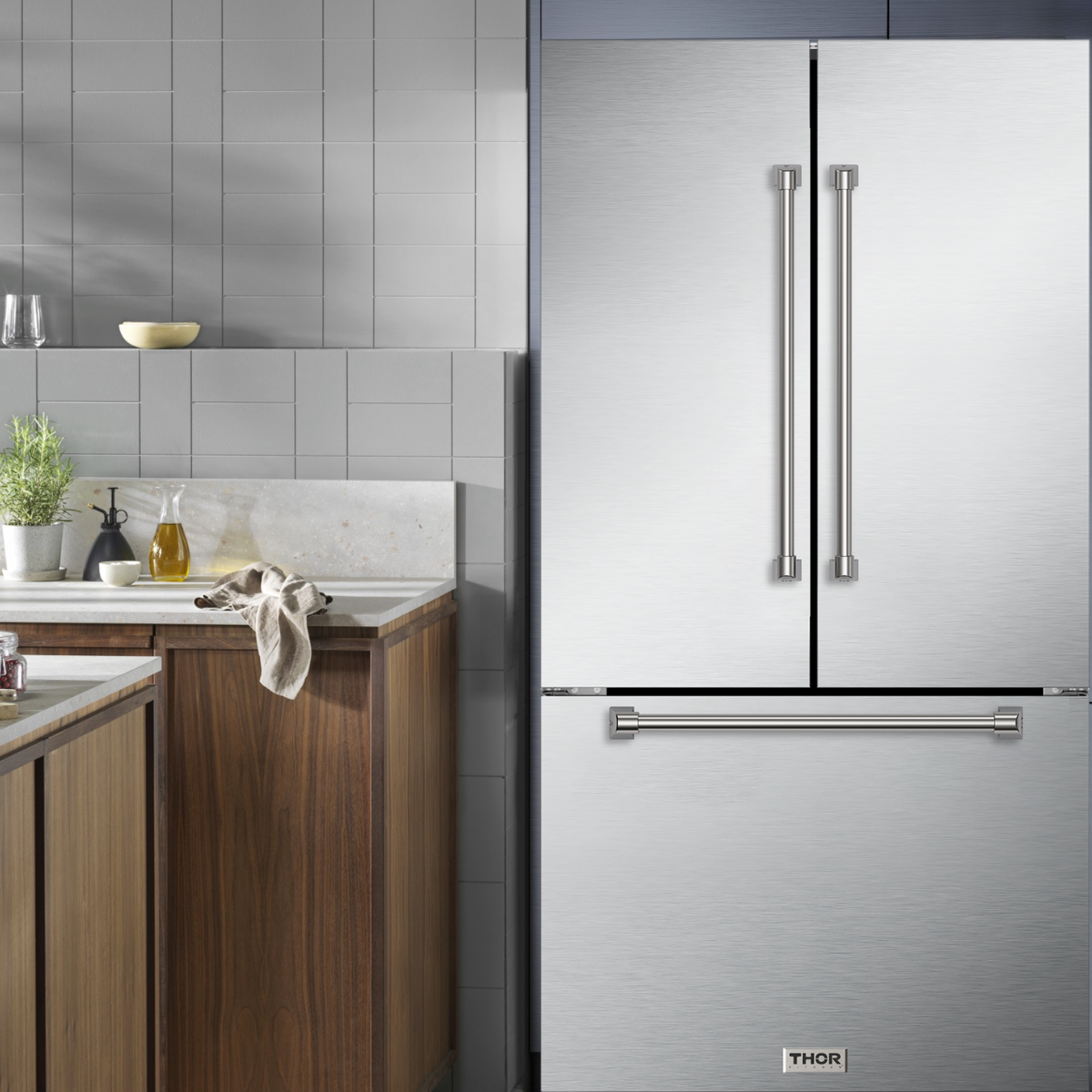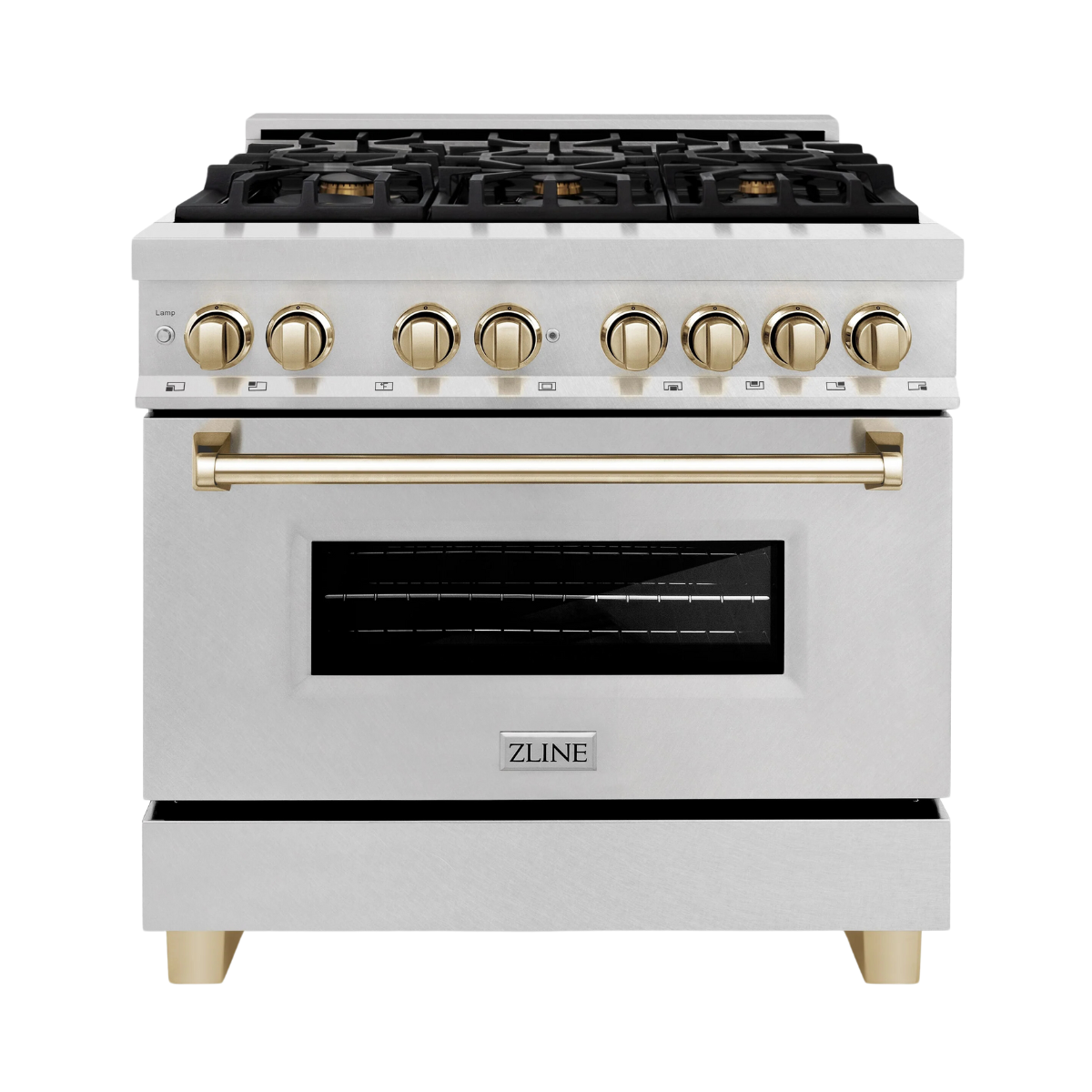Source: Jason Kolenda / Shutterstock.com
While browsing appliances for your kitchen, you may have noticed a specific category of products called induction ranges. They are recognizable by their flat black cooktops that look like glass-top electric models, except they cook using a magnetic field. On a typical 30-inch cooktop, the heating fields are concentrated in four spots and function like the burners on a gas stove or the heating elements on an electric cooktop.
How Does Induction Cooking Work?
An induction range relies on the scientific principle of electromagnetic induction to heat cookware. The pots and pans must be manufactured using the correct materials, typically cast iron or stainless steel. Instead of using a flame or an electrically heated element, it uses coiled copper wires located underneath a flat glass cooktop surface. When an electric current passes through the copper wire, it generates a magnetic current.
If cookware made of magnetic materials sits above the copper wires, electromagnetism causes the magnetic current to course through it, transforming your cookware into a heat source. This heating principle allows temperatures to increase and decrease rapidly, which results in faster heating and cooking times.
Shop All of Our Kitchen RangesWhat Types of Induction Ranges Are Available?

Premium Home Source carries a wide selection of high-quality, professionally designed kitchen ranges with induction cooktops, such as the ZLINE stainless steel 30" range with sealed electric oven or the ILVE 40" Majestic II featuring six cooking elements. Choose from multiple sizes, colors, trims and other features, such as fingerprint-resistant surfaces, slide-in vs. freestanding ranges, sealed ovens and more great features.
Pros and Cons of Cooking with an Induction Range
Due to the unique scientific principles used to make induction cooking possible, it is essential to understand the benefits and drawbacks of cooking with an induction kitchen range before deciding whether you should buy one.
Pros of Induction Ranges
- One of the biggest benefits of cooking with an induction kitchen range is speed. Induction heating allows your pots, pans and other cookware to heat up faster than other methods. On average, it takes five to six minutes to boil four cups of water on an induction range, compared to eight to twelve minutes for an electric coil and six to eight minutes for a gas burner.
- Induction ranges are 5 to 10% more efficient than electric ranges and three times more efficient than gas stoves. This energy efficiency reduces energy bills, making an induction range more environmentally friendly than electric or gas models.
- Like their electric counterparts, an induction cooktop has no grates. When turned on, it produces no exposed flames. The only element that becomes hot is a flat glass surface, and only when a pot is placed on it, making it one of the safest types of kitchen ranges.
- Induction ranges are easy to clean and maintain. For daily cleaning, all you need is dish soap, a paper towel or a damp cloth. Use white vinegar for water stains and glass or ceramic degreaser for more challenging food residue.
Cons of Induction Ranges
- If you are not used to cooking with an induction range, you may have a learning curve due to the faster heating capabilities and risk overcooking some dishes initially.
- Induction ranges require cookware compatible with this cooking method. The electromagnetic process requires pots and pans featuring magnetic, induction-compatible materials, such as stainless steel, cast iron, and enameled iron. They do not work with glass, aluminum, or copper, as these materials are non-magnetic.
- A hum or buzz sound is common but heavy flat-bottomed pans can help reduce the vibrations causing the noise.

Testing Cookware for Induction Compatibility
If you’re unsure whether your existing pots, pans, skillets and other cookware will work with an induction range, you can use the magnet test to determine their compatibility.
To conduct the magnet test, use a magnet and hold it near the bottom end of your cookware, where the heating elements would touch it, and then watch how it reacts to the surface.
- If the magnet sticks to your cookware immediately and with force, it is compatible with induction ranges.
- If the magnet is only moderately attracted to the cookware and requires very little force to pull it away, your induction cooktops will still work. However, they may not heat your cookware as effectively as fully induction-compatible products.
- If the magnet isn’t attracted to the cookware, they lack the metals necessary for electromagnetic induction.
Cook Like the Pros with Premium Home Source
Premium Home Source is a family-owned supplier of professional-grade kitchen ranges, cooktops and other home appliances to help you create the home of your dreams. Browse our large selection of kitchen ranges by renowned brands such as ZLINE, ILVE, Thor Kitchen, Forno, Kucht and NXR.





